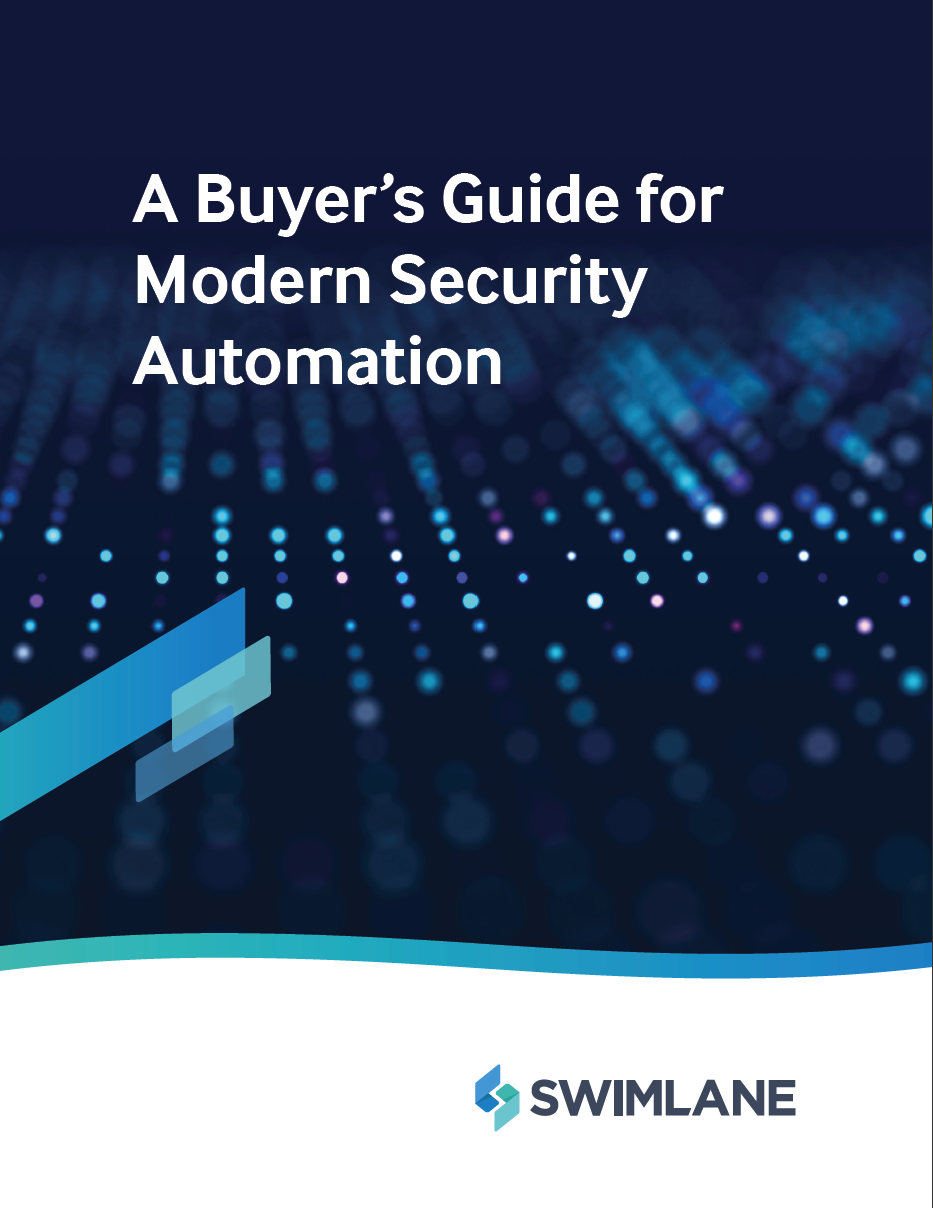Which is best for your security team?
It’s an automated world out there. If it can be done programmatically, it already is – or will be, soon enough. The security industry has seen this first-hand. As cyber threats have grown more common and skilled security professionals become rare, security automation platforms have been created to free up your existing security team’s time.
Finding the best style of security automation isn’t always easy, though. Low-code and no-code are buzzy terms that have received plenty of hype lately. But what’s the difference? Which one is best for your security team? In fact, does it even matter?
With so many security automation solutions hitting the market, it can be difficult to decide which type will deliver the best for you. Fear not, though — here’s a quick guide to low-code and no-code automation.
What is Low-Code Security Automation?
Low-code automation is the sweet spot between no-code, which allows zero coding capabilities, and full-code, which is often represented by early security automation platforms and traditional security orchestration, automation and response (SOAR) platforms that require developers who are capable of complex manual coding. With a low-code solution you can still expect robust application development capabilities for a range of use cases, but with more user-friendly features like drag-and-drop data entry and built-in business logic.
The flexibility in how sophisticated or simplistic you want your platform to be is unique to low-code automation.
What is No-Code Security Automation?
No-code platforms offer codeless access to the basics of security automation. Don’t let the name fool you – there is still plenty of coding in the backend, but your team does not need or have the option to use python scripting in order to set up and use no-code platforms.
For small security teams, resources and budgets are oftentimes spread thin, making no-code an appealing option. No-code security automation makes simple automated tasks accessible, usually at a slightly cheaper price than other security solutions. However, this reduced cost does mean fewer features (no case management or reporting), restricted use cases and little-to-no customization.
Differences in Low-Code vs. No-Code
The most obvious difference between no-code and low-code platforms is that low-code enables coding via python script for teams who want the added flexibility and expansion, while no-code does not. It may seem like the differences stop there, but down to their core, no-code and low-code are vastly different. There is no one solution that is right for every team, so it’s important to consider which approach will deliver the outcomes that you need.
Playbook Customization
Low-code: With coding still an option, low-code platforms are fully-customizable to automate your security team’s unique use cases. This means that most customization is as simple as drag-and-drop actions, while users who require more control are empowered to build it “their way” using python scripting.
No-code: When you choose a fully-built application, you lose the freedom to fully customize the platform to fit your team’s needs. Pre-built templates are still customizable, but anything outside of the available actions is nearly impossible to adjust. Some pre-built applications even limit the number of actions that can be taken in a single workflow.
Integrations
Whether you choose low-code or no-code, you will need to utilize a Rest API to build your own integrations. Now, where the real difference comes in is with integration libraries.
Low-code: Low-code platforms have been on the market longer, resulting in more time to create and grow larger libraries of integrations. You still have the option to build out your own integrations, or you can simply save time accessing a diverse range of integrations. More experienced low-code platforms also have the power to offer on-demand integrations.
No-code: As the newer automation option, no-code platforms tend to have smaller integration libraries. Consider the time it takes to build out your own integrations versus the time you would save with a larger integration library.
Reporting
Low-code: It’s critical that your team is able to spot trends in your security metrics. Low-code platforms offer self-documenting playbooks and fully-customizable persona-based reporting in real-time. This makes it easy to adapt to your current business processes with flexible scheduling options for end-of-shift reporting, weekly status reports, or quarterly operational metric reporting without needing to build a custom scripting solution.
No-code: No-code automation is great at simplifying security automation processes, but these tools don’t make it easy to understand if the automated processes were effective at scale. They have not yet invested in offering customers reporting capabilities. Security leaders who care about identifying their security team’s effectiveness, risk levels, and tool performance, should consider if the simplicity of no-code playbooks is enough to make up for this lack.
Case Management
Low-code: Case management is a critical component of any incident response process. Low-code security platforms include powerful case management features that speed up investigations with enriched data and rapid response, making it easier to close more security alerts in less time. With customizable controls and drop-in widgets, you have the flexibility to build a case management system that’s responsive to your business logic and security workflows.
No-code: The simplicity of no-code means your team may be sacrificing sophisticated features, one of those being case management. No-code security automation tends to be light on case management capabilities if they even have them at all. If incident response is a core element of your security operations, this will limit your team’s success.
Which is Best for My Team?
Regardless of which your team uses, low-code and no-code automation both have the same goal: to free up time and let you focus on what’s important.
Ultimately, what matters is that you pick a solution that fits your people, processes and technology stack best. Whether that’s low-code or no-code security automation, the outcomes that affect your people are more important than the security platform itself.
Think about which will work for your high-priority use cases today and where you want to be in the future. As your business grows and security posture matures, which solution will scale to help you solve the challenges you’ll face in the future? Which solution will enable your team to learn from best practices and grow as security professionals? Is the vendor simply offering a product, or will they be a great partner as well? Consider which vendor will provide the customer experience you need when your team faces trouble. Which vendor has the expertise to help you solve a new use case?
Who will make your life easier?
Both low-code and no-code solutions are valid options to consider, but consider what is right for your team both today and in the future. Learn what security automation can do and how it can help take your team from good to great in our upcoming webinar, Low-Code Security Automation 101.

A Buyer’s Guide for Modern Security Automation
Cut through the complexity and frustration of SOAR and security automation platforms. Learn everything you need to know about selecting an automation solution, so you can select the best one for your team.


